After several internal discussions with the club board, PSV Eindhoven made the decision to part ways with coach Ruud van Nistelrooy on May 24th.
In light of this, the club eagerly anticipates embarking on a new era under the leadership of Peter Bosz. Expressing confidence in their choice, PSV’s technical director, Earnest Stewart, stated that Bosz was the perfect candidate for this pivotal position.
Bosz is no stranger to the Eredivisie, having previously managed Vitesse Arnhem and Heracles Almelo, as well as guiding Ajax to the final of the UEFA Europa League. Additionally, his coaching experience includes stints with Borussia Dortmund and Bayer Leverkusen in Germany, as well as two-year tenure with Olympique Lyon in France.
In this tactical analysis, we will delve into the strategies employed by the Dutchman and explore which players from PSV’s roster are best suited to adapt to his tactics and playing style.
Bosz‘s philosophy
Peter Bosz usually prefers to play with 4-3-3 or switch to it dynamically from 4-2-3-1 with a lot of freedom, dynamism, and positional rotations around the pitch.
The 59-year-old coach has previously summed up his style by stating, “I have a philosophy of offensive play, of attractive football because we play for the fans and not for ourselves. But the way we will play obviously depends on the players.”
In fact, in his recent stints at Bayer 04 Leverkusen and Lyon, he demonstrated adaptability in his tactics, adjusting them according to the players available. In Leverkusen, he employed a system with a single pivot alongside Julian Brandt (roamer and creative playmaker), and Kai Havertz (the deep runner). However, during his time at Lyon, he opted for a more dynamic approach with a double pivot (rotating between Maxence Caqueret, Thiago Mendes, Tanguy Ndombele, and Florent Da Silva).
Generally, Peter also explained the key principles of his in-possession and out-of-possession phases which built upon key principles: applying high pressure on opponents, maintaining compactness, emphasising the five-second rule of quick ball recovery (something Bosz loved watching while Guardiola was Barcelona’s coach), and trying usually to control the game with a variable tempo.
The 59-year-old coach has consistently employed a positional play approach throughout his career, searching for superiorities (numerical, dynamic, qualitative, and positional) across the pitch with fluidity mostly in the final third.
In the below graphic, one of his strategies involves maintaining a numerical advantage (2 vs 1) against the opposition’s first line. This is achieved by including the pivot player in a third-man combination to find the spare man (the second centre-back) who has the space to progress vertically. Meanwhile, the nearest winger moves inside towards the half-space, enticing the opposition’s fullback to follow, thereby creating room for the overlapping fullback. Simultaneously, the dropping striker and the nearest number ‘8’ confuse the opposition with their differing vertical and diagonal runs.
Once the overlapping fullback receives the ball higher up the field as the third man, the nearest number ‘8’ makes a diagonal run to exploit the space and receive the pass and then crosses the ball to the reverse attacking runners.

The second variation relies on positional rotations involving the winger, fullback, and nearest midfielder. As depicted in the tactical board below, the fullback underlaps to draw the opposition’s player away, allowing the left winger to drop deep and receive the ball. The dropping-off striker then receives the split pass and plays it to the fullback, who moves diagonally toward the flank. At this time, the players attack the box to receive the cross.

Additionally, one of the coach’s common approaches is to play a long diagonal pass to the winger on the opposite side, while the number ‘8’ creates a vertical run to manipulate the attention of the opposition’s fullback.
Furthermore, his team may lure as many opposition players as possible to a side and then switch the play to isolate the reverse winger on the other side.
Once the winger receives the ball and dribbles inside, the fullback either overlaps or underlaps based on the situation, while the attacking players on the opposite side make runs into the box, anticipating a driven or lofted cross.

Also, his teams effectively attempt to execute penetrations centrally through the defensive blocks by positioning themselves strategically and gaining the positional advantage, employing rotations to create open passing lanes between the lines, and applying third-man and one-two combinations.
Defensively, Peter Bosz consistently employs proactive defensive strategies aimed at compressing the space between the lines and denying the opposition time and space on the ball. He emphasises a high defensive line to achieve this, forcing turnovers and creating counter-pressing situations. His players are expected to press aggressively when they lose possession.
During his time at Leverkusen in Germany, as shown in the graphic below, there was not a significant gap between his team and Bayern Munich in defensive statistics. Leverkusen achieved 403 high regains compared to Bayern’s 501. In terms of counter-pressing recoveries, Leverkusen recorded 592, while Bayern had 607. Additionally, Leverkusen had 122 dangerous recoveries in contrast to Bayern Munich’s 149.
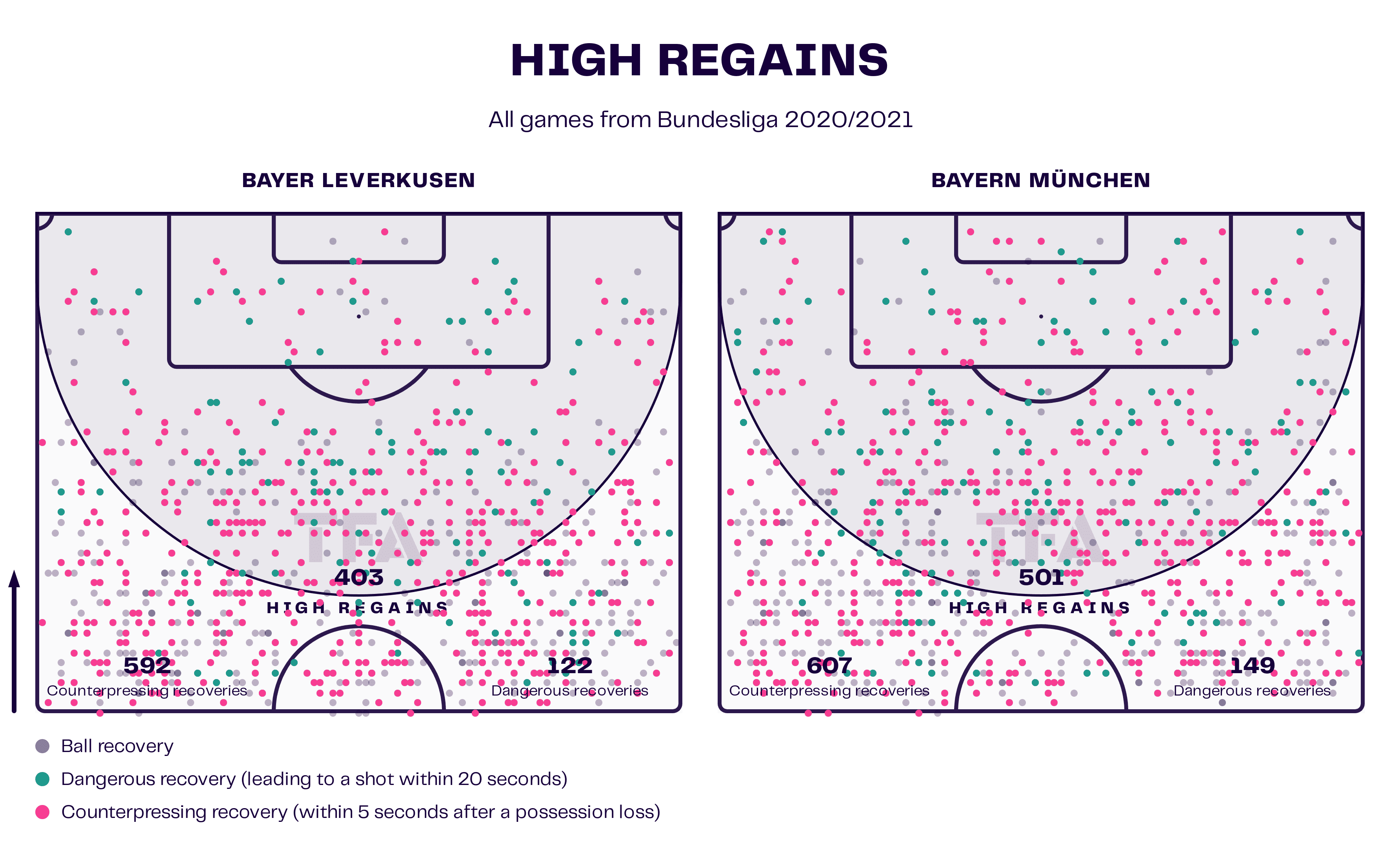
Furthermore, when managing Lyon in France, Bosz’s team recorded 455 high regains compared to PSG’s 483. Lyon outperformed PSG in counter-pressing recoveries with 619 compared to PSG’s 576. Lyon also had 160 dangerous recoveries, slightly behind PSG’s 174.

Where do PSV stand in this approach?
During Ruud van Nistelrooy’s time at PSV, the team adopted a positional style of play. The former Manchester United and Real Madrid striker implemented an asymmetric approach that involved transitioning from 4-3-3 or 4-2-3-1 to the 3-3-1-3 structure.
In this system, one of the wingers was responsible for providing width on the flanks. Meanwhile, the other winger (Xavi Simons) would invert inside as a roamer, adding creativity and unpredictability to the team as an extra playmaker.
The fullbacks also played a crucial role in the system. One of them would stretch the width and overlap. On the other hand, the opposite fullback would join the first line of attack, creating an additional passing option and enabling the team to build up play more effectively.
This was most evident from the match against NEC Nijmegen, which resulted in a 4-0 win. During the game, Patrick van Aanholt, the left back, made overlapping runs on the flank, maintaining the width. At the same time, the right-back Phillipp Mwene inverted into the midfield, possibly to offer support in possession or to create numerical superiority.
Meanwhile, Xavi Simons, the left winger, positioned himself between the lines as a roamer, constantly searching for spaces to receive the ball. In this particular instance, Simons received a pass from Joey Veerman and quickly turned with a positive orientation, meaning he faced forward to attack. He executed a one-two combination with the latter.
At the same time, the right winger, Johan Bakayoko, was wide stretching the defence horizontally. One of the midfielders, Guus Til, moved vertically to overload the central area, attracting the attention of the opposing defenders and potentially creating more passing options or confusion.
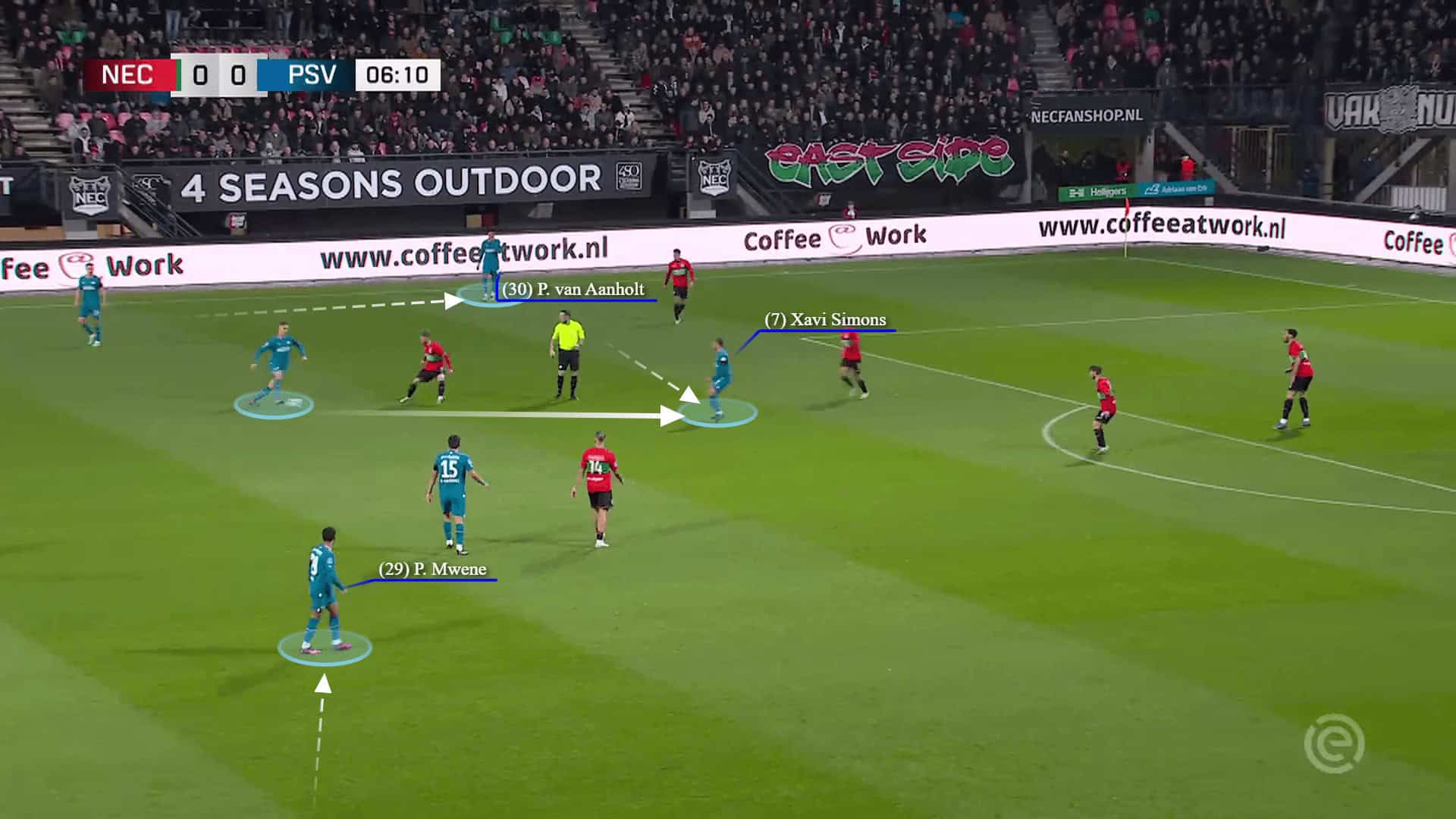
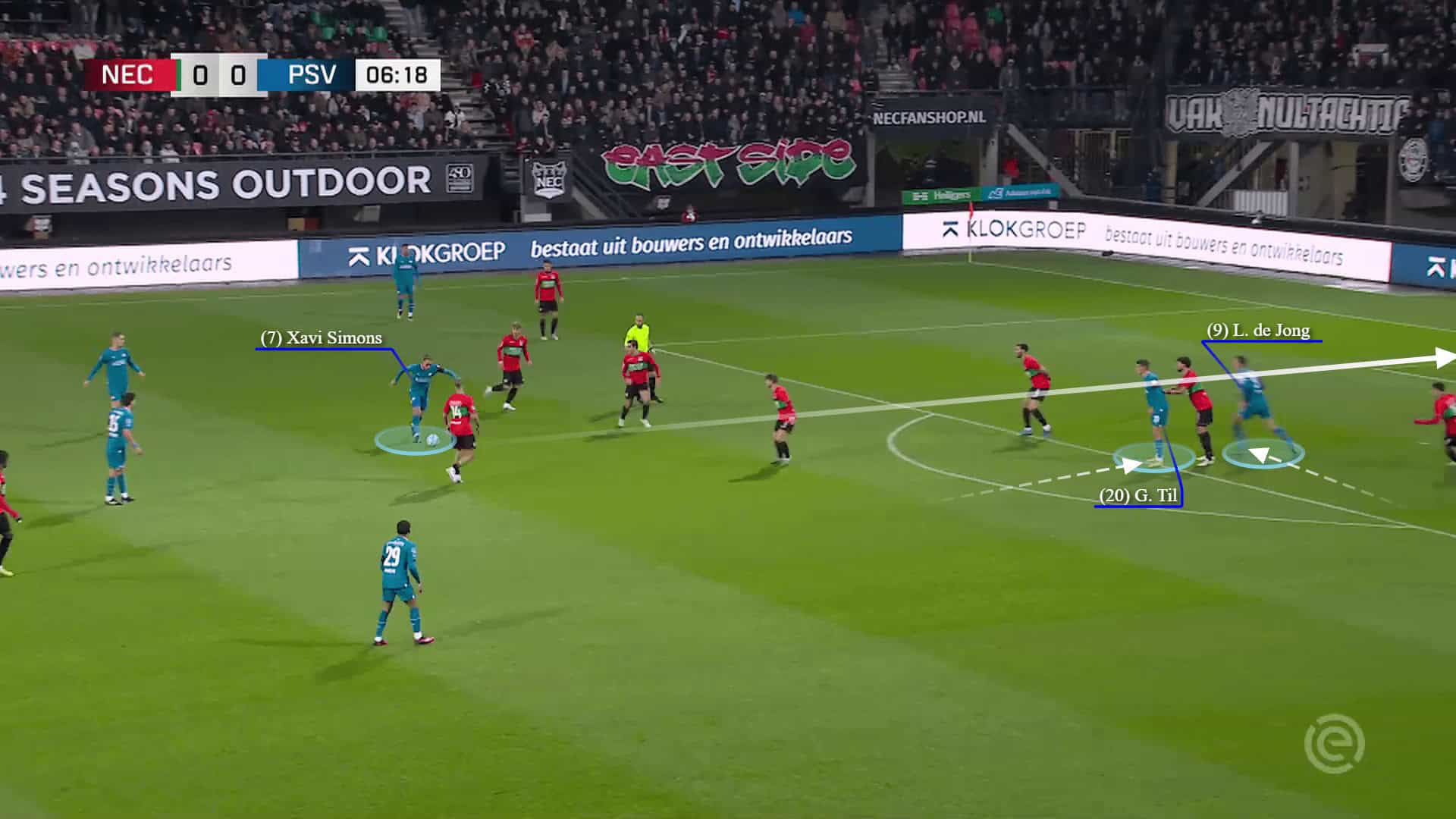
As a result of these coordinated movements and actions, Simons decided to take a shot. Simultaneously, Luuk de Jong, the team’s striker, benefited by scoring from the rebound.
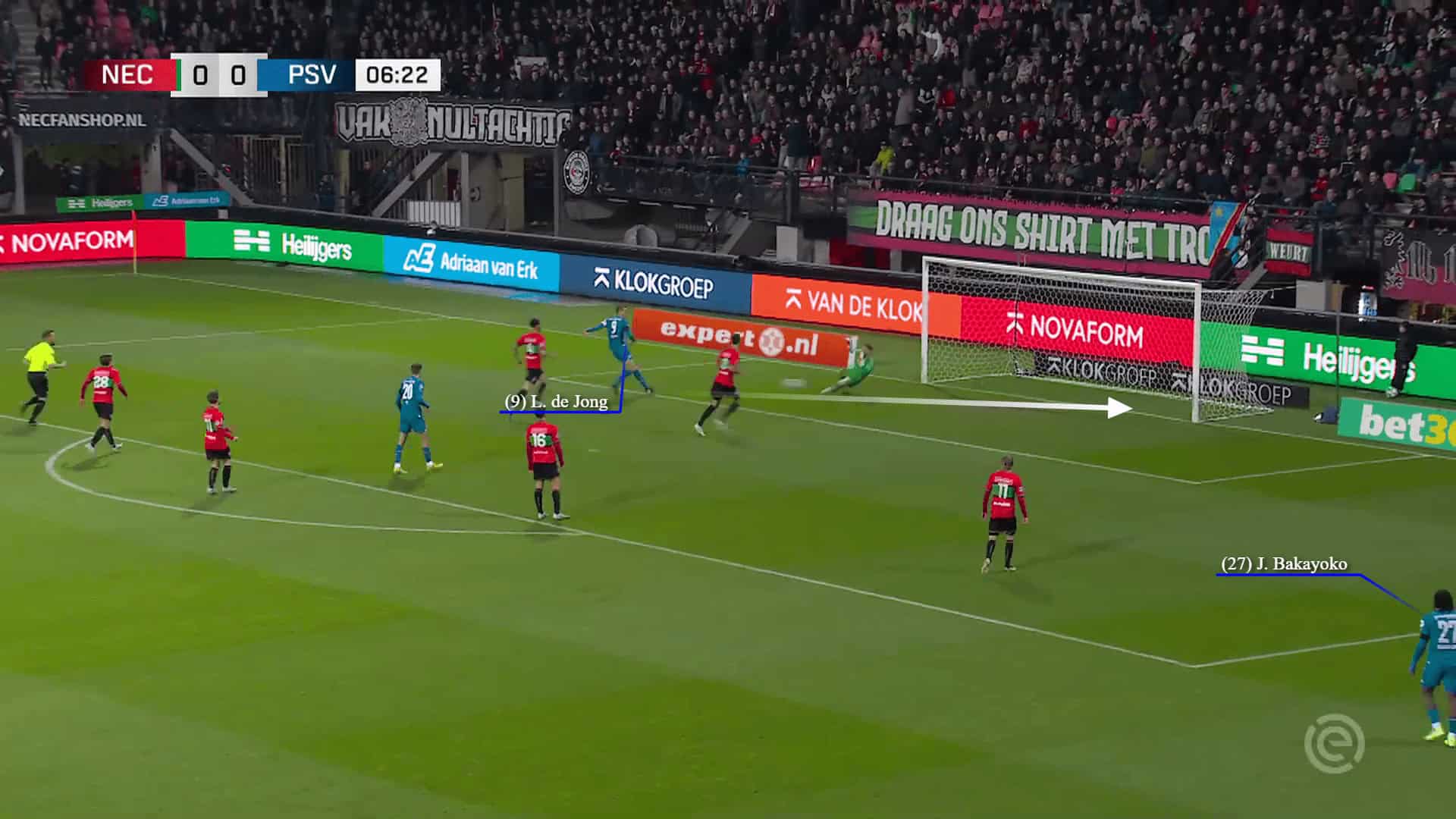
Can he evolve these young players under his leadership?
Suitable players
Throughout his managerial career, Peter Bosz has demonstrated a remarkable ability to develop young players, nurturing their talents and helping them reach their potential. Some notable examples of players he has developed include Kai Havertz, Jadon Sancho, Leon Bailey, Kasper Dolberg, Andre Onana, and Julian Brandt.
During his season at Ajax, Bosz provided opportunities to young players such as David Neres and Justin Kluivert.
At PSV, Peter Bosz has the opportunity to work with a group of promising young players who have the potential to develop under his guidance. Players such as Xavi Simons, Johan Bakayoko, and Ibrahim Sangaré possess the talent and ability to benefit from Bosz’s coaching and managerial style.
Ibrahim Sangaré’s height and strong build give him an advantage in aerial duels while also using his physicality well to shield the ball, win tackles, and impose himself on opponents.
Sangaré excels in his positional awareness and has a great ability to intercept passes. He has a good reading of the game and is often found in the right place at the right time to break up opposition attacks. His strong tackling ability and aggression make him a valuable asset in regaining possession for his team. In addition to his offensive contributions, Sangaré also possesses a solid passing ability in possession.
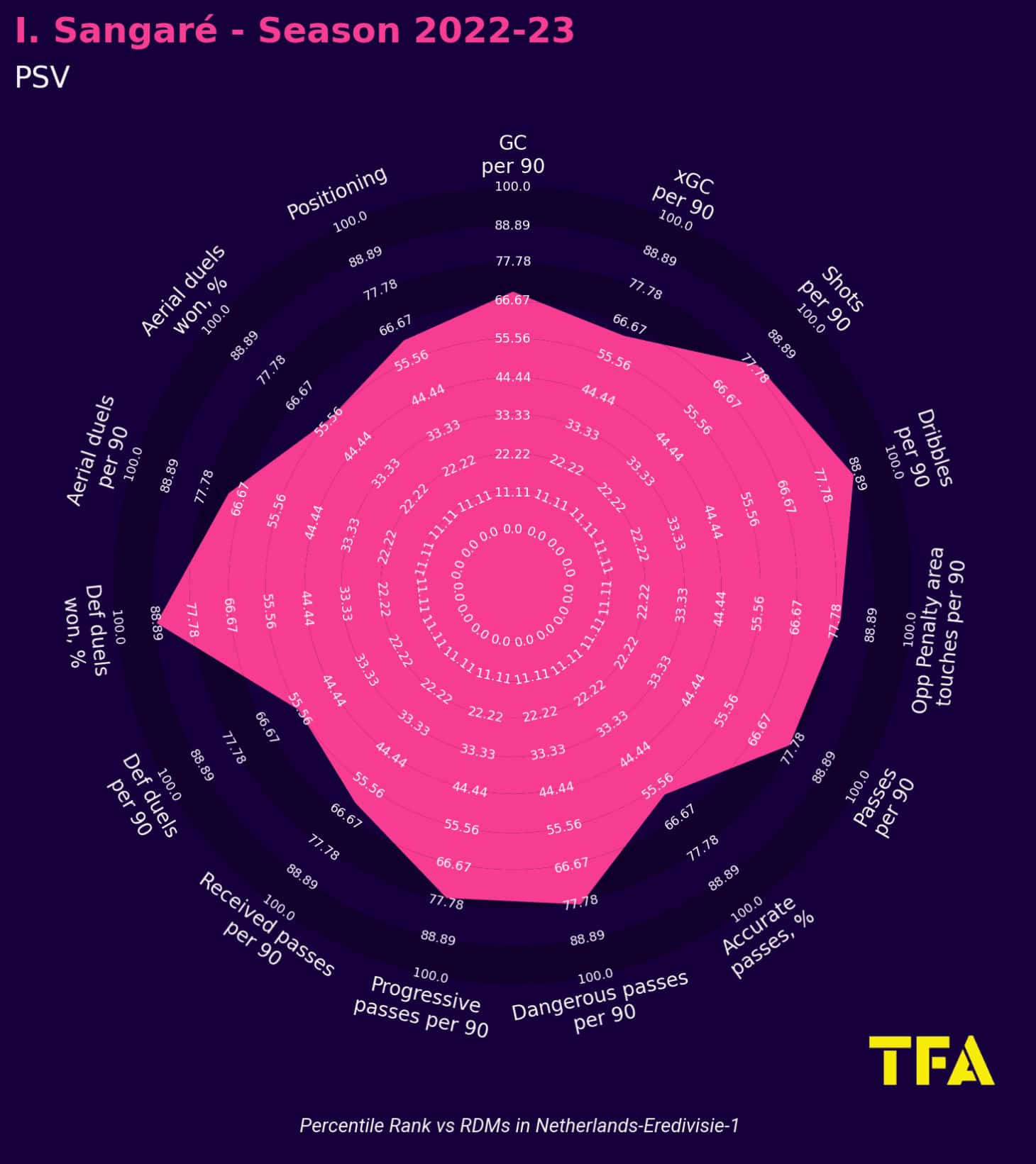
Furthermore, one of Europe’s best young talents is Xavi Simons. His role is to influence the game through passing as his vision is excellent. Simons also has the ability to control, has great close dribbling skills, and can create and score. Surely he is able to improve.
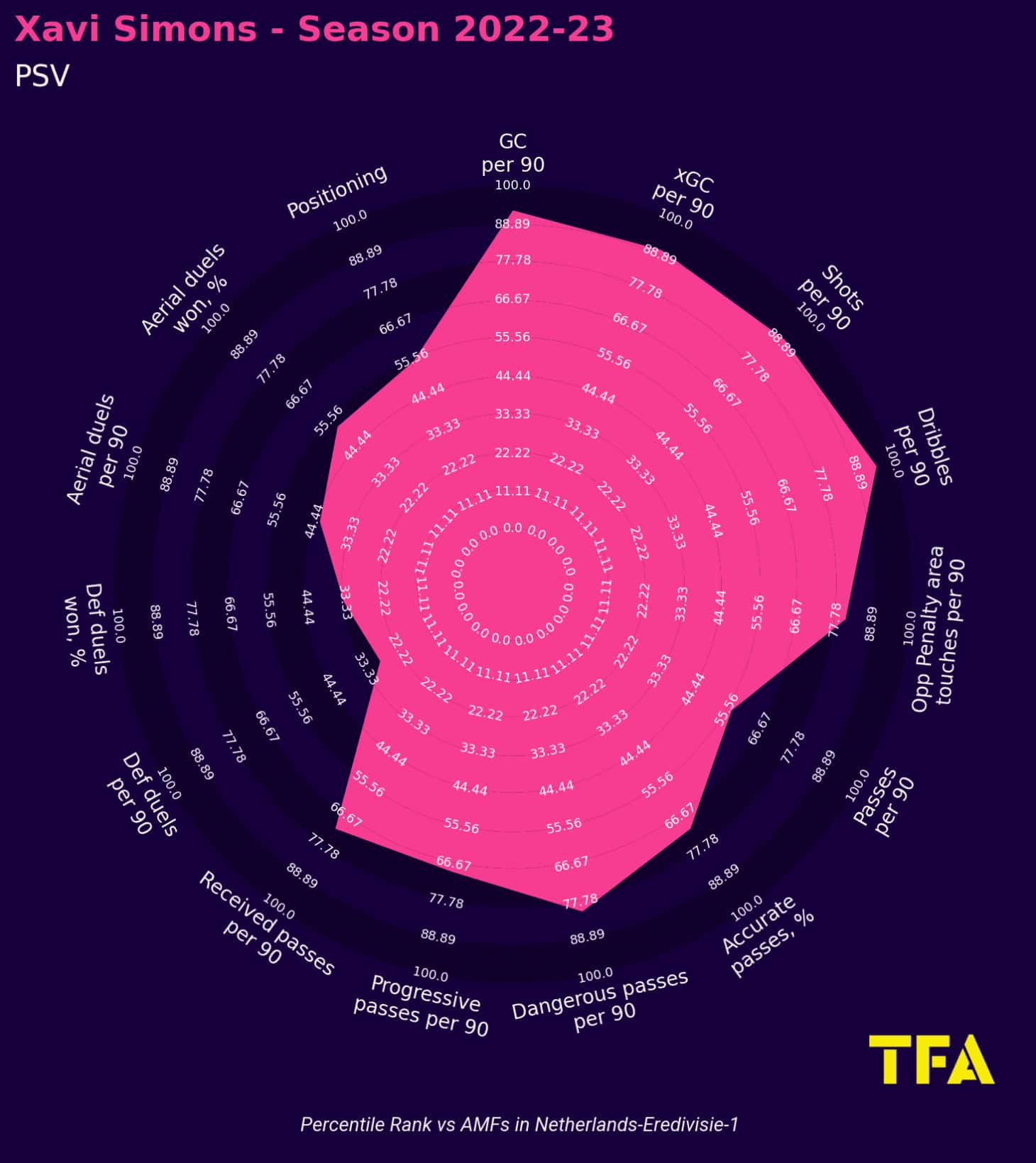
The young, dynamic winger Johna Bakayoko possesses a lethal combination of goal-scoring ability and speed to exploit spaces behind the opposing defence. Additionally, his exceptional strength and aggressiveness in pressing make him an ideal fit for the team’s new coach.
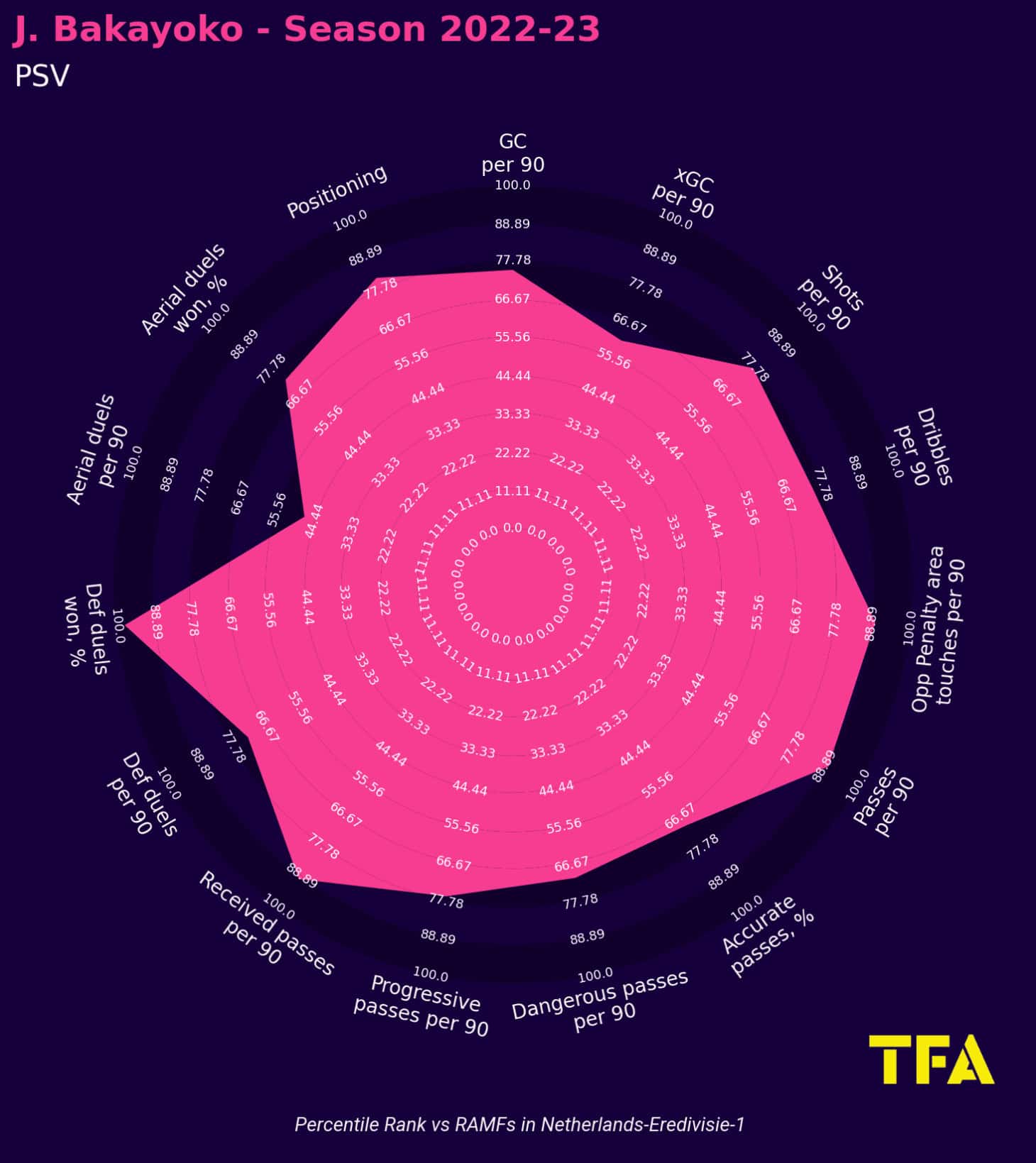
Here is an analysis of their pizza statistics in comparison to other teams in the Dutch league, focusing on their offensive and defensive prowess in line with the standards of modern football.
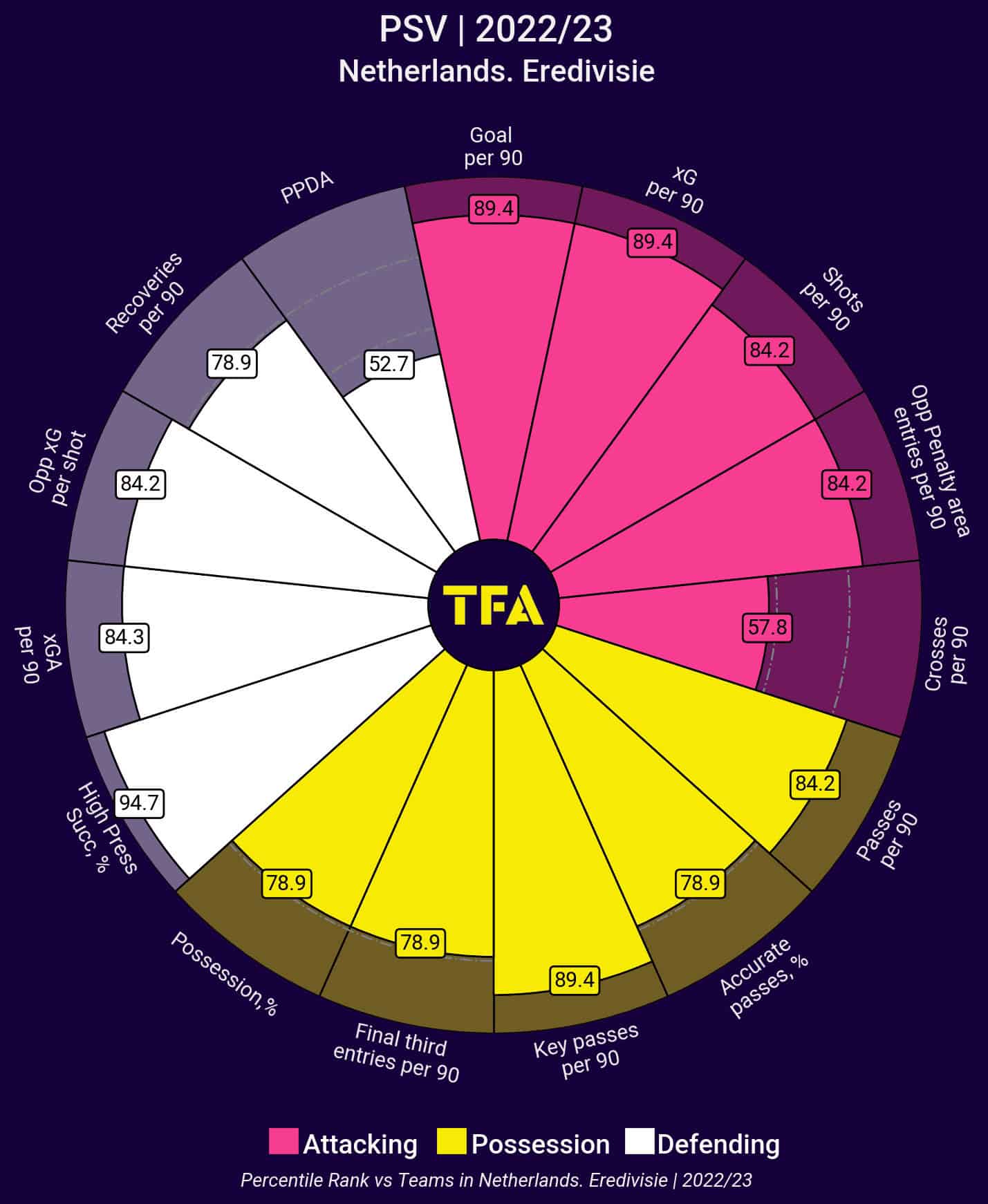
Conclusion
This analysis outlined the approach of PSV’s new coach, Peter Bozs, and assessed the team’s susceptibility to his methods. Additionally, we have highlighted the potential for young players to flourish under his guidance.
Following his appointment, the coach expressed that, “PSV have had periods in the past when they dominated Dutch football. I want to relive those times.”
We will witness their progress in the upcoming season.





Comments